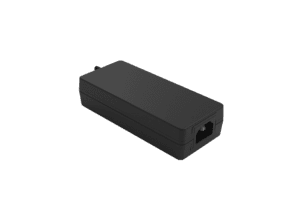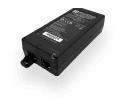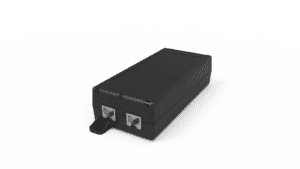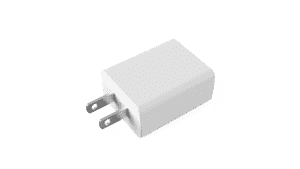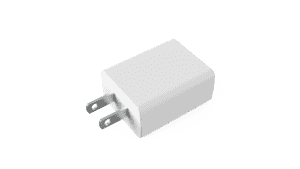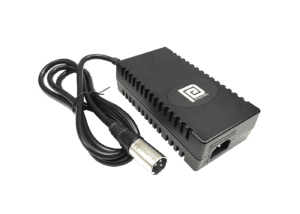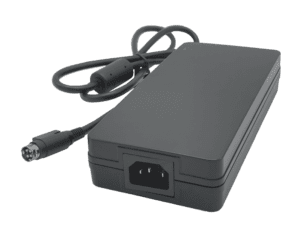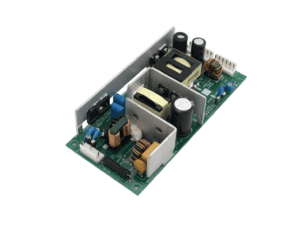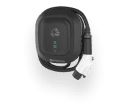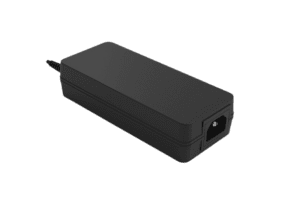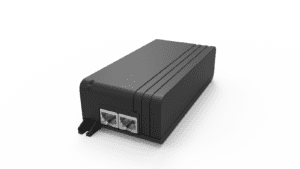BLOG
Understanding the IEEE 802.3af Standard: Basics of Power over Ethernet (PoE)
Table of contents

Power over Ethernet (PoE) technology has transformed network infrastructure by enabling the transmission of both power and data over a single Ethernet cable. The IEEE 802.3af standard, also known as PoE, is one of the foundational standards that have made this possible. This article explores the fundamentals of the IEEE 802.3af PoE standard, providing an in-depth overview of its key features, benefits, and applications for modern network deployments.
What is the IEEE 802.3af Standard?
The IEEE 802.3af standard, commonly known as PoE (Power over Ethernet), is a networking standard ratified by the Institute of Electrical and Electronics Engineers (IEEE) in 2003. It defines a method for delivering electrical power over Ethernet cabling, allowing devices to receive power and data through a single cable. This standard is crucial for simplifying the installation of network devices and reducing the need for separate power supplies.
History of the IEEE 802.3af Standard
The development of the IEEE 802.3af standard began in the late 1990s, driven by the need to power network devices like IP phones, wireless access points, and network cameras without requiring a dedicated power source. Before this standard, each device required its own power supply, leading to increased complexity and cost in network installations. The IEEE 802.3af standard was officially ratified in June 2003, providing a unified solution to power network devices over existing Ethernet infrastructure.
Key Features of the IEEE 802.3af PoE Standard
The IEEE 802.3af standard provides several key features that make it an essential component of modern network infrastructures.
Power Delivery
The IEEE 802.3af standard specifies a method to deliver up to 15.4 watts of DC power per port over standard Ethernet cabling. This power is sufficient for many low-to-medium power devices. The power is delivered through two out of the four pairs of wires within a standard Cat5 or higher Ethernet cable, ensuring compatibility with existing infrastructure.
Voltage Range
The standard operates within a voltage range of 44 to 57 volts, typically using 48 volts as the nominal supply voltage. This range is chosen to balance power delivery efficiency and safety, ensuring minimal power loss over the cable while maintaining safe voltage levels for both equipment and human interaction.
Compatibility
IEEE 802.3af is compatible with Cat5 and higher cabling, making it widely applicable in most existing and new network installations. This compatibility ensures that organizations can deploy PoE devices without needing to upgrade their cabling infrastructure, reducing costs and simplifying implementation.
Detection and Classification
The standard includes mechanisms for detecting PoE-enabled devices (Powered Devices, or PDs) and classifying their power requirements. When a Power Sourcing Equipment (PSE) such as a PoE switch or injector is connected to a PD, it sends a detection signal to determine if the device is PoE-compatible. If the device is compatible, the PSE proceeds to classify the device based on its power requirements. This classification helps optimize power distribution and ensures that each device receives the appropriate amount of power.
- Detection Process: The PSE sends a small voltage (usually between 2.7V and 10.1V) to detect the presence of a PD. If the PD has the correct signature resistance (approximately 25k ohms), it confirms its compatibility.
- Classification Process (Optional for 802.3 AF POE): Once detection is complete, the PSE classifies the PD into one of five classes (Class 0 to Class 4) based on its power needs, ranging from 0.44W to 12.95W. This classification helps the PSE manage its power budget efficiently.
Safety Features
Safety is a critical aspect of the IEEE 802.3af standard. It incorporates several safety mechanisms to protect both the network devices and the infrastructure.
- Overcurrent Protection: The standard includes safeguards against overcurrent situations, where excessive current could damage devices or the cabling. The PSE continuously monitors the current and disconnects power if it exceeds safe levels.
- Short-Circuit Protection: In the event of a short circuit, the PSE can detect the fault and shut off power to prevent damage to the network and connected devices.
- Isolation Requirements: To ensure safety, the standard mandates electrical isolation between the power sourcing and data transmission components, protecting both the equipment and personnel from electrical hazards.
Midspan and Endspan PSEs
The standard supports two types of power sourcing equipment: midspan and endspan.
- Endspan PSEs: These are typically integrated into network switches. They provide both data and power over the same Ethernet cables from the switch to the PDs. This integration simplifies the network infrastructure by reducing the number of devices and connections required.
- Midspan PSEs: These are standalone devices placed between a non-PoE switch and the PDs. They inject power into the Ethernet cables while passing through data signals. Midspan injectors are useful for retrofitting existing networks without PoE switches.
Remote Power Management
IEEE 802.3af enables centralized power management, allowing network administrators to control and monitor the power consumption of connected devices remotely. This feature includes capabilities such as power cycling (turning devices on and off remotely), monitoring power usage, and receiving alerts for power-related issues. Centralized power management enhances network reliability, simplifies maintenance, and reduces operational costs.
Backward Compatibility
The IEEE 802.3af standard is designed to be safe with non-PoE legacy devices. If a non-PoE device is connected to a PoE-enabled port, the PSE will detect the absence of the PoE signature resistance and will not supply power, ensuring that legacy devices are not damaged.
Benefits of Implementing IEEE 802.3af in Modern Networks
Implementing the IEEE 802.3af standard in modern networks offers numerous benefits that enhance overall network performance and efficiency.
Simplified Network Infrastructure
By combining power and data transmission over a single cable, IEEE 802.3af simplifies network infrastructure. This reduces the complexity and cost of installations and maintenance.
Enhanced Flexibility
IEEE 802.3af provides greater flexibility in device placement. Devices such as IP cameras and wireless access points can be installed in optimal locations without the constraint of needing a nearby power outlet.
Cost Efficiency
The IEEE 802.3af standard reduces the need for separate power supplies and cabling, resulting in significant cost savings for businesses. This is especially beneficial for large-scale network deployments.
Top Features and Benefits
- Streamlined Installations: Simplifies the installation process, reducing labor and material costs.
- Optimal Device Placement: Enhances network performance by allowing devices to be placed in the most effective locations.
- Cost Savings: Reduces overall costs by eliminating the need for additional power infrastructure.
Best Practices
- Plan Network Layouts: Design network layouts that take advantage of the flexibility offered by PoE.
- Monitor Power Usage: Regularly monitor power consumption to ensure efficient energy use and prevent overloading.
- Invest in Scalable Solutions: Choose PoE solutions that can scale with your network as it grows.
Top Applications of IEEE 802.3af PoE
The IEEE 802.3af standard supports a wide range of applications, making it a versatile solution for various network environments.
IP Cameras: PoE allows for easier installation and deployment of surveillance cameras, providing both power and data through a single cable, reducing the need for separate power sources.
Wireless Access Points (WAPs): PoE simplifies the installation of WAPs by eliminating the need for electrical outlets, enabling flexibility in placement for optimal wireless coverage.
VoIP Phones: IEEE 802.3af powers VoIP phones directly through Ethernet cables, streamlining installation and ensuring that phones remain operational during power outages when connected to a PoE-enabled switch.
Networked Sensors: Various sensors, such as temperature, motion, and environmental sensors, benefit from PoE by being powered and connected through a single cable, facilitating their deployment in hard-to-reach locations.
Digital Signage: PoE provides the necessary power and data for digital signage displays, allowing for centralized control and easy installation in various environments, such as retail spaces and transportation hubs.
Access Control Systems: PoE can power access control devices like card readers and biometric scanners, enhancing security systems without the need for additional power sources.
Smart Lighting: PoE-enabled LED lighting systems can be easily integrated into existing network infrastructure, allowing for centralized control and energy management.
Point-of-Sale (POS) Terminals: PoE simplifies the setup of POS systems in retail environments by providing power and data over a single cable, enhancing mobility and reducing clutter.
Intercom Systems: PoE can power intercom and doorbell systems, allowing for seamless communication and monitoring without requiring additional electrical work.
Home Automation Devices: PoE can support various smart home devices, including smart thermostats and automated blinds, facilitating easier installation and integration into home networks.
Best Practices for Deploying IEEE 802.3af PoE
Deploying IEEE 802.3af PoE in your network requires careful planning and execution to ensure optimal performance and reliability.
Conduct a Network Assessment
Before deploying PoE, conduct a thorough network assessment to identify power requirements, device compatibility, and potential challenges. This helps in designing a robust PoE network that meets business needs.
Choose the Right Equipment
Selecting the right PoE equipment, including switches, injectors, and cabling, is crucial for a successful implementation. Ensure that all components are compatible with your devices and support the IEEE 802.3af standard.
Plan for Scalability
Design your PoE network with scalability in mind. Consider future expansion needs and choose equipment that can accommodate additional devices and increased power demands.
Comparison with Other PoE Standards
The IEEE 802.3af standard is one of several PoE standards, each with its own specifications and use cases. Comparing IEEE 802.3af with other PoE standards helps in understanding its unique advantages and limitations.
IEEE 802.3at (PoE+)
Introduced in 2009, the IEEE 802.3at standard, also known as PoE+, supports up to 25.5 watts of power. This makes it suitable for more power-hungry devices such as PTZ cameras and advanced wireless access points.
IEEE 802.3bt (PoE++)
The IEEE 802.3bt standard, introduced in 2018, supports up to 60 watts (Type 3) and 90 watts (Type 4) of power. This standard enables the deployment of even more powerful devices and advanced applications, including lighting and industrial automation.
Future Trends in PoE Technology
As technology advances, new trends in PoE are emerging that offer even greater potential for modern networks.
AI and IoT Integration
Integrating PoE with AI and IoT technologies enhances the capabilities of smart networks, providing real-time data, predictive analytics, and automated controls.
Enhanced Security Measures
Future trends in PoE include enhanced security measures to protect against cyber threats, ensuring the reliable and secure operation of PoE networks.
Phihong’s Role in Advancing IEEE 802.3af PoE Solutions
Phihong has been a key player in the development and advancement of IEEE 802.3af PoE solutions. The company’s commitment to innovation and quality has positioned it as a leader in the PoE industry.
Innovative Product Development
Phihong has consistently developed new PoE products that meet the evolving needs of the market. These products include PoE injectors, midspans, switches, and splitters, each offering unique features and benefits.
Industry Collaboration
Phihong collaborates with industry organizations and standards bodies to advance PoE technology and ensure interoperability. This collaboration ensures that Phihong’s products meet the highest standards of quality and performance.
Customer-Centric Solutions
Phihong focuses on creating solutions that address the specific needs of its customers, from small businesses to large enterprises. The company’s dedication to customer satisfaction ensures long-term success and reliability.
CLIENT'S QUOTE
Phihong's Power-Over-Ethernet solutions have transformed our network, boosting efficiency and reducing costs. Their seamless integration has simplified both installation and maintenance.
Explore More with Phihong USA
As we conclude our exploration of PoE technology, it’s evident how these innovations are streamlining power and data integration across various industries. Phihong USA stands at the forefront of this technological advancement, offering a diverse range of power solutions designed to meet the evolving needs of modern industries.
Phihong USA’s extensive product lineup includes:
- Power over Ethernet (PoE) Solutions: Delivering reliable power and data transmission over a single cable, ideal for simplifying network installations and reducing costs.
- AC/DC Adapters and Power Supplies: From compact adapters to industrial-grade power supplies, Phihong provides solutions that ensure efficiency and reliability in various applications.
- Battery Chargers: Customizable chargers for lithium-ion and lead-acid batteries, supporting a wide range of power requirements for mobility and industrial applications.
- Medical Power Supplies: Specialized power solutions designed to meet the stringent requirements of the healthcare industry, ensuring safety and reliability.
Phihong USA is committed to innovation and excellence, continually developing products that meet the highest standards of performance and reliability. Their global reach and dedication to customer support make them a trusted partner in powering the future.
Here are some useful links to explore Phihong USA’s offerings further and bring in new potential clients:
Visit Phihong USA to discover how their advanced power solutions can support your business needs. Whether you’re looking to upgrade your network, or find reliable power supplies, Phihong USA has you covered.
By choosing Phihong USA, you’re partnering with a leader in power technology, ensuring your operations run smoothly and efficiently with top-tier power solutions.

Contact Our Team Today!
Our dedicated sales team and international partners are prepared to support you with your latest projects and initiatives globally.
FAQ
What is the IEEE 802.3af standard and why is it important?
The IEEE 802.3af standard, introduced in 2003, is the first official Power over Ethernet (PoE) standard. It defines the specifications for delivering up to 15.4 watts of electrical power over standard Ethernet cables. This standard is important because it simplifies network installations by allowing both power and data to be transmitted over a single cable, reducing the need for separate power supplies and cabling. The IEEE 802.3af standard has been widely adopted and remains a foundational standard for PoE technology.
What are the key features of the IEEE 802.3af standard?
The IEEE 802.3af standard provides several key features, including power delivery of up to 15.4 watts over Cat5 cables, the definition of Power Sourcing Equipment (PSE) and Powered Devices (PD), and mechanisms for detecting and classifying PDs. These features ensure reliable power delivery and data transmission, simplify network installations, and protect non-PoE devices from damage. The standard supports a wide range of network devices, making it a versatile solution for various applications.
How does IEEE 802.3af compare to other PoE standards?
The IEEE 802.3af standard supports up to 15.4 watts of power delivery, making it suitable for many network devices. In comparison, the IEEE 802.3at (PoE+) standard supports up to 25.5 watts, enabling the use of more power-hungry devices such as PTZ cameras and advanced wireless access points. The IEEE 802.3bt (PoE++) standard supports up to 60 watts (Type 3) and 90 watts (Type 4), allowing for even more powerful devices and advanced applications. Each standard offers different power levels and capabilities, expanding the range of PoE applications.
What are the benefits of implementing IEEE 802.3af in modern networks?
Implementing the IEEE 802.3af standard in modern networks offers numerous benefits, including simplified network infrastructure, enhanced flexibility in device placement, and significant cost savings. By combining power and data transmission over a single cable, IEEE 802.3af reduces the complexity and cost of installations and maintenance. The standard also supports a wide range of devices, providing greater flexibility in network design and scalability. These benefits make IEEE 802.3af an attractive option for businesses looking to optimize their network infrastructure.

